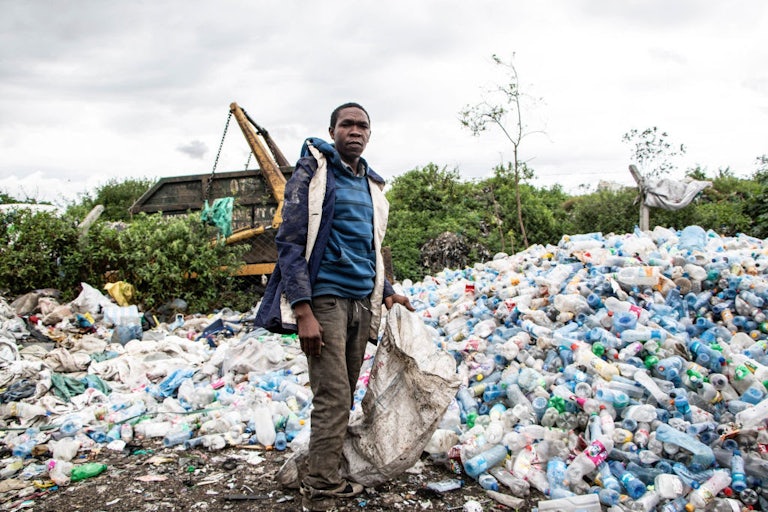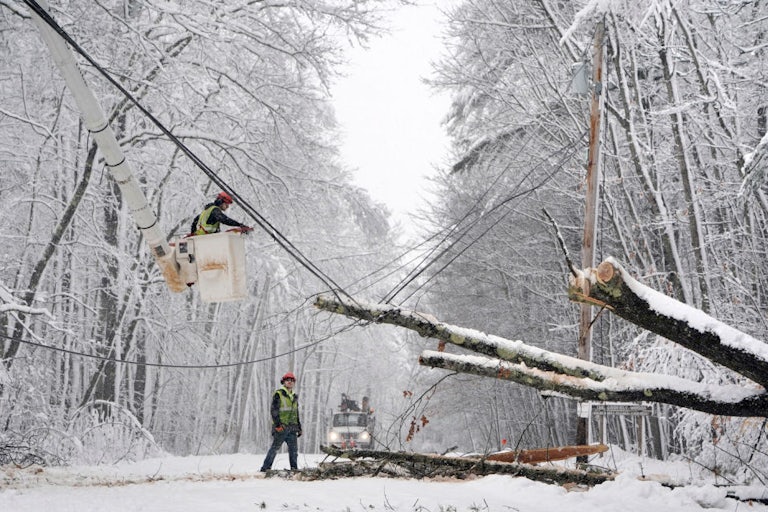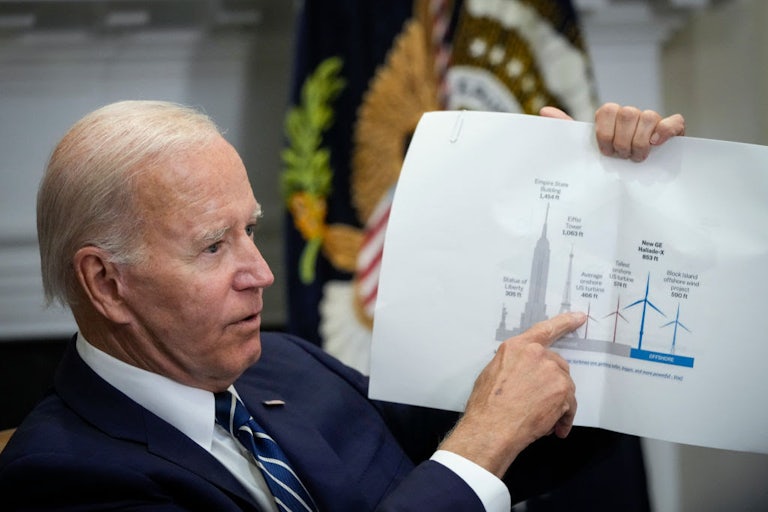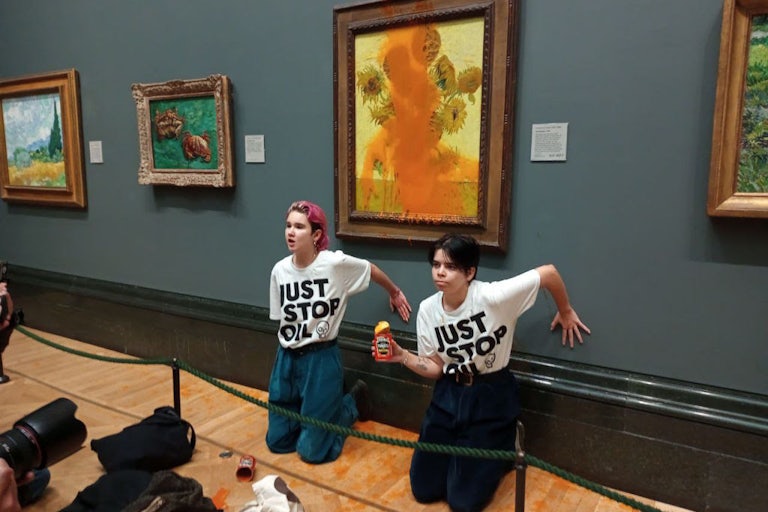Plastics Are Poisoning Both Our Bodies and Our Politics
The petrochemical industry is obstructing a global treaty to reduce plastic pollution.

If the definition of insanity is doing the same thing over and over and expecting a different result, the definition of obstruction is knowing exactly how to fix a problem and pursuing everything but the obvious solution. The U.N. Environment Program’s attempts to negotiate a global plastic treaty is suffering from both of these afflictions at once.
Negotiators are gathered in Nairobi this week for the third of five meetings to broker a treaty to reduce plastic pollution. The past two meetings didn’t go great. The first, in Uruguay, ended with parties “split on whether goals and efforts should be global and mandatory, or voluntary and country-led,” according to Al Jazeera. Given that voluntary, country-led goals are completely ineffective at actually curbing plastic pollution, this is a bit like saying the meeting ended with parties split on whether to have a meeting. The second, in Paris, ended with parties agreeing to write a draft treaty. Given that the whole point of these conferences was to draft a treaty, this is a bit like saying the meeting ended with the parties agreeing to have a meeting.
This large-scale bureaucratic performance art would be funny were it not for the deadly seriousness of the crisis. Once upon a time in the 1980s and ’90s, many people thought of plastic pollution mostly as a problem for dolphins and sea turtles, and one that could be solved by snipping the rings on six-packs of soda. Since then, a barrage of studies and reports have made clear that both oceans and land are in fact drowning in plastic trash that, even before it becomes trash, is poisoning us. It poisons the environment as it’s being made, it poisons us as we use it, it poisons the environment after we throw it out, and then it poisons us again when we eat animals and plants from that environment. Microplastics can now be found everywhere from human breast milk to the clouds above Mount Fuji. The plankton that were supposed to break down this stuff are actually pooping out more of it. Plastic production is predicted to triple by 2060, part of a well-documented petrochemical strategy by Big Oil to prop up business as the energy transition robs them of opportunities to profit off knowingly poisoning the world with their other product: fossil fuels.
Sure, plastics have some important uses—which the industry takes every available opportunity to advertise. But take a moment to try to count all the pieces of plastic you touch per day. What proportion of those are artificial heart valves? And what proportion are, by contrast, things that are convenient and cheap—because a vast industrial system has evolved to make them so—but could be replaced just as effectively by a different material, or eliminated entirely with little difference?
This week’s UNEP talks in Nairobi are fracturing along predictable lines. A “High Ambition Coalition” of countries in the global south, EU member states, Canada, and others continues to push for binding restrictions on plastics production. Countries with big petrochemical industries, including Saudi Arabia, Russia, and China, want to focus on plastics recycling. The United States, possessed of both a big petrochemical industry and a political system religiously opposed to binding agreements about anything, favors a compromise of nothing in particular. Per Reuters:
The United States, which initially wanted a treaty comprised of national plans to control plastics, has revised its stance in recent months. It now argues that, while the treaty should still be based on national plans, those plans should reflect globally agreed goals to reduce plastic pollution that are “meaningful and feasible,” a U.S. State Department spokesperson said in a statement to Reuters.
Whatever that means. Meanwhile, the U.N. still hasn’t taken action to exclude industry representatives from these talks, despite an international group of scientists last week condemning this conflict of interest. At least 143 fossil fuel and petrochemical industry lobbyists have registered to attend the latest meeting—more representatives, according to the Center for International Environmental Law, than those of the 70 smallest members combined. Six member states have even included industry representatives in their official delegations.
But let’s return to the obstruction part of the talks: the focus on plastics recycling. First off, of course the petrochemical industry wants to make this a recycling issue, since that means avoiding tackling the actual problem of excessive plastics production. But second, increased plastic recycling comes with its own set of problems. For a study released last month, researchers from Sweden, Germany, and Denmark purchased recycled plastic samples from a variety of regions and found them laced with an array of toxic chemicals, including pesticides and pharmaceuticals. This is not an isolated finding. “A recent analysis from [the International Pollutants Elimination Network],” Joseph Winters wrote for Grist in May, “found a hazardous plastic additive in every recycled plastic children’s toy and hair accessory it examined. Other research suggests that the recycling process itself can generate benzene, a human carcinogen.” And then there’s the research suggesting plastics recycling actually exacerbates microplastic pollution, with recycling facilities releasing a significant portion of the plastic material they’re trying to recycle as microplastics. That’s if it’s even correct to call such things recycling facilities, given that, according to one report, no plastic meets the reusability rate (30 percent) needed to be deemed recyclable.
Obstruction is proposing a solution you know full well doesn’t address the problem. Big oil has been pursuing this for decades, NPR and PBS Frontline reported in 2020 after reviewing internal documents: “The industry sold the public on an idea it knew wouldn’t work—that the majority of plastic could be, and would be, recycled—all while making billions of dollars selling the world new plastic.”
This is the industry that knew about climate change in the ’70s. The industry that exploited a lethal pandemic—and understandable human fear—to try to force single-use plastic bags back into the very few jurisdictions and stores that were trying to discourage them. The industry that encouraged people to think that if they didn’t take the time to decode teeny tiny numbers on the bottom of pieces of plastic and sort them into recyclable and nonrecyclable piles bearing little correspondence to actual recyclability, then those dead dolphins and sea turtles would be their fault.
Why is anyone letting these obstructionists anywhere near the drafting process and expecting a productive result?
Good News, Bad News
![]()
About a year after President Jair Bolsonaro’s departure from office and the succession of the more openly environmentalist administration of Luiz Inácio Lula da Silva, deforestation in Brazil of the Amazon rainforest has reached a five-year low.
![]()
Stat of the Week
.png)
Drilling sites in Texas are apparently leaking twice as much methane as similar sites in neighboring New Mexico, which has better regulations. (This is the kind of thing that doesn’t require fancy carbon sequestration solutions. You can just fix it, now.)
Elsewhere in the Ecosystem
The 20 Farming Families Who Use More Water From the Colorado River Than Some Western States
Absolutely do not miss this wild ProPublica and Desert Sun collaboration on the worsening Western water crisis. When these reporters requested records from California’s Imperial Irrigation District to figure out where the water allocated to the area was going, the request was denied. So they used satellite data and ownership records to figure out that most of the district’s water use came down to 20 families.
Farmers in one family, the Abattis, used an estimated 260,000 acre-feet, more water than the entire Las Vegas metropolitan area uses.… The district and its farmers emphasize that they keep a steady stream of broccoli, lettuce, onions and other produce on American dinner tables, including in the dead of winter. But only a few families used a majority of the water they got to grow food that people eat. Instead, we found that most use the bulk of their water growing hay to feed livestock.
Read Nat Lash’s and Janet Wilson’s report from ProPublica and The Desert Sun.
This article first appeared in Life in a Warming World, a weekly TNR newsletter authored by deputy editor Heather Souvaine Horn. Sign up here











.png)